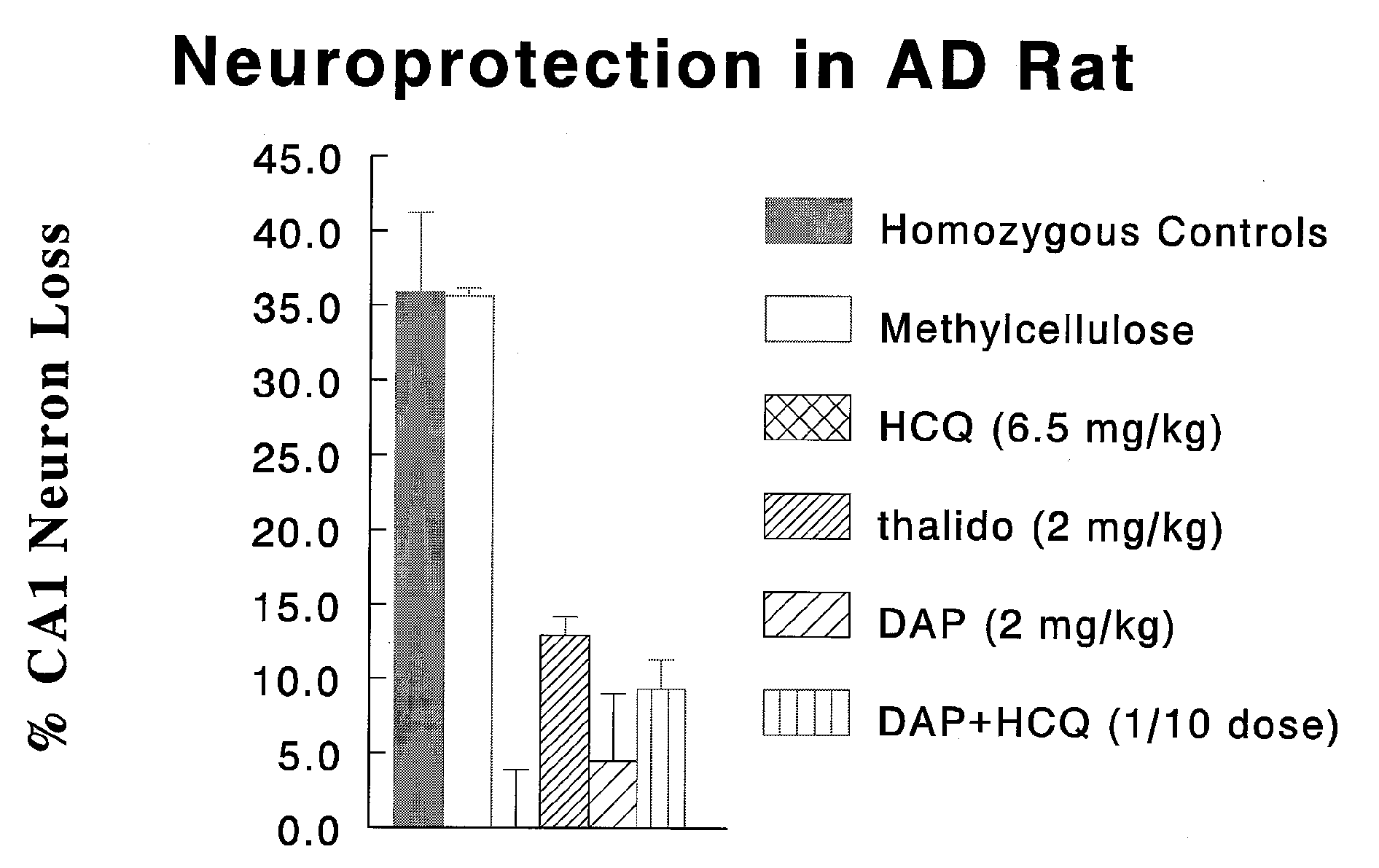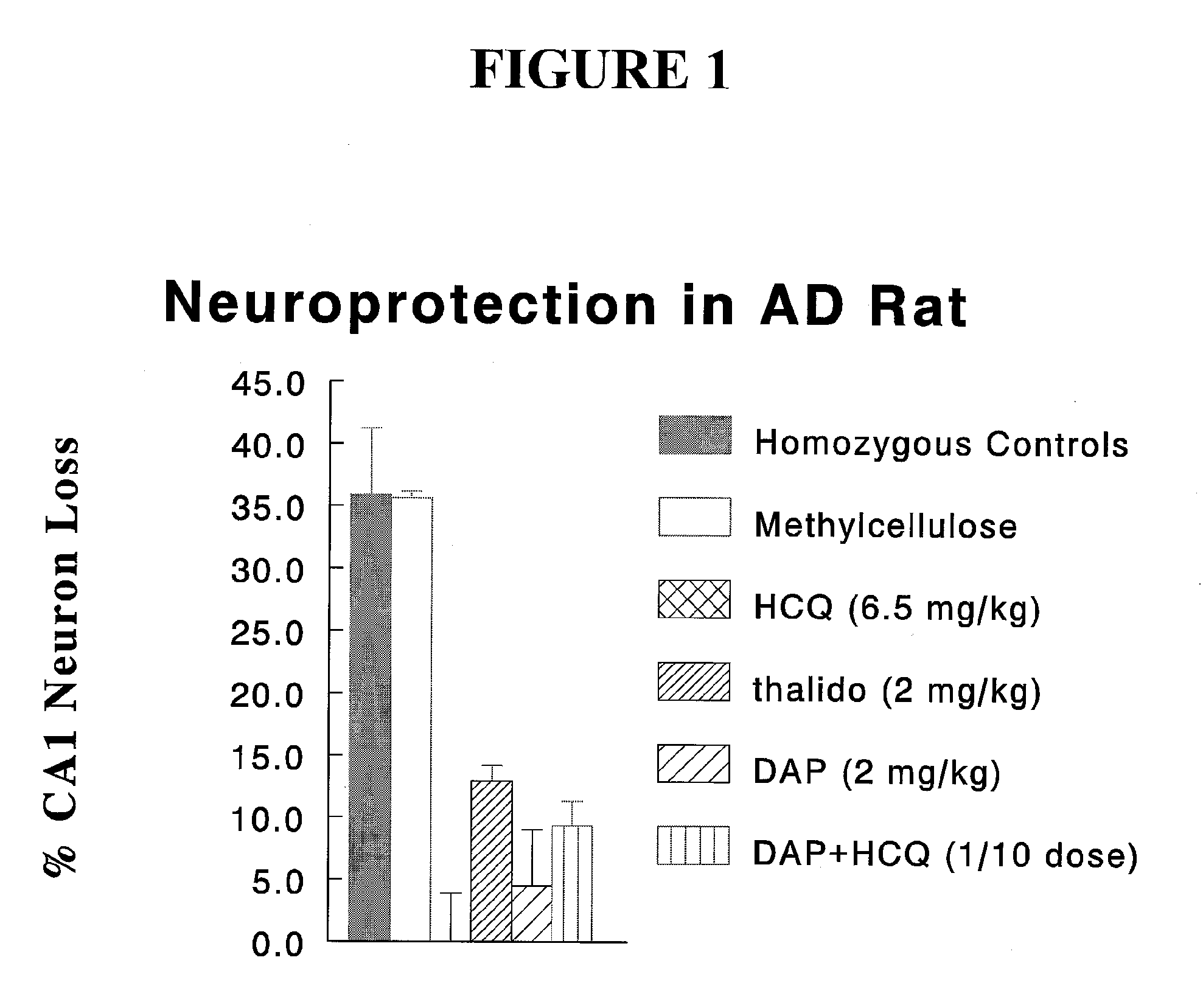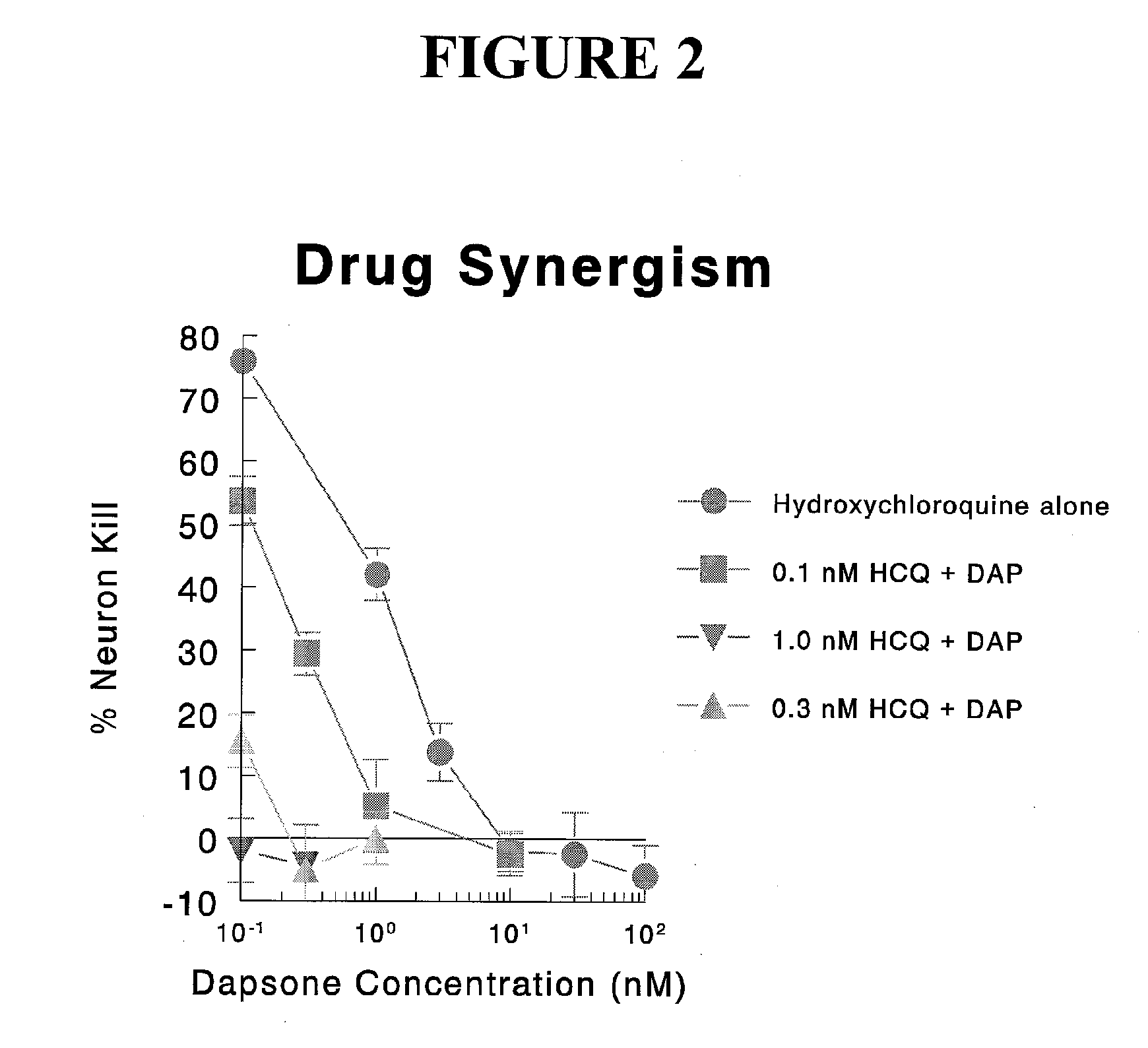Compositions containing substituted quinolines and substituted diphenyl sulfones and methods of use
a technology of diphenyl sulfone and quinoline, which is applied in the field of compositions containing substituted quinolines and substituted diphenyl sulfones, can solve the problems of little progress in identifying agents that provide neuroprotection and much effort expended
- Summary
- Abstract
- Description
- Claims
- Application Information
AI Technical Summary
Benefits of technology
Problems solved by technology
Method used
Image
Examples
examples
[0125] The compositions of the invention and comparative compounds and compositions were evaluated in accordance with the test methods described in U.S. Pat. No. 6,043,283; U.S. Pat. No. 6,071,493; U.S. Pat. No. 6,451,544; U.S. Pat. No. 6,451,742; and U.S. Pat. No. 6,475,745, the disclosures of which [0126] are incorporated herein by reference. In general, the drug assays involved the addition of known concentrations of a test agent over a range of concentrations. After 72 hours, the experiment was stopped and the neurons were identified by immuno-staining. The data was expressed as % neuronal survival at I-(neuronal number is test sample / neuronal number in untreated control sample))×100%. Dose response curves were then used to estimate the effective for dose (50%) of the neuroprotective agent (defined as the ED50).
[0127] Abbreviations: [0128] DAP dapsone [0129] HCQ hydroxychloroquine [0130] AD Alzheimer's disease
[0131]FIG. 1 is a plot of % neuron loss for several test agents (hom...
PUM
| Property | Measurement | Unit |
|---|---|---|
| time | aaaaa | aaaaa |
| body weight | aaaaa | aaaaa |
| body weight | aaaaa | aaaaa |
Abstract
Description
Claims
Application Information
 Login to View More
Login to View More - R&D
- Intellectual Property
- Life Sciences
- Materials
- Tech Scout
- Unparalleled Data Quality
- Higher Quality Content
- 60% Fewer Hallucinations
Browse by: Latest US Patents, China's latest patents, Technical Efficacy Thesaurus, Application Domain, Technology Topic, Popular Technical Reports.
© 2025 PatSnap. All rights reserved.Legal|Privacy policy|Modern Slavery Act Transparency Statement|Sitemap|About US| Contact US: help@patsnap.com



